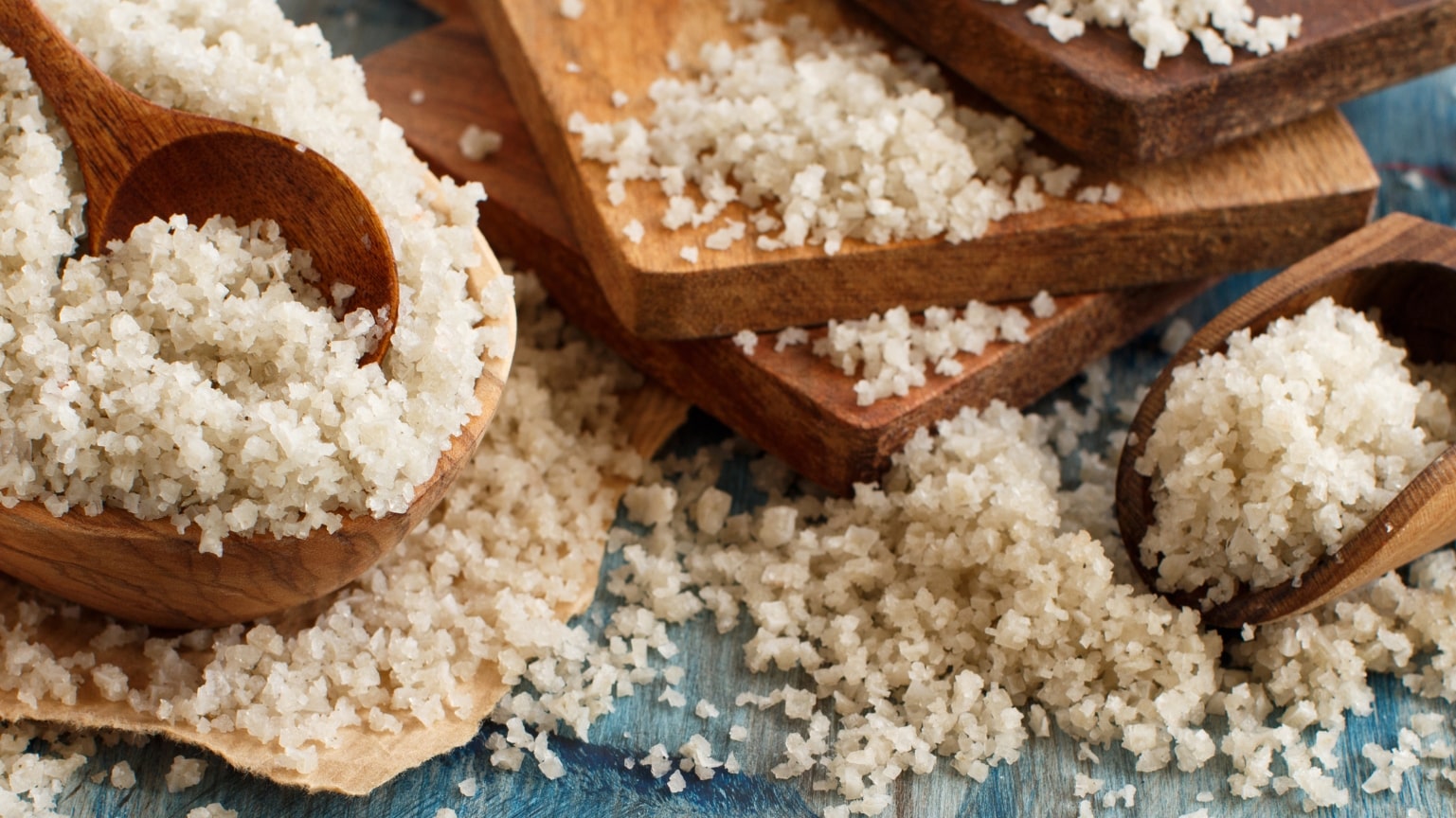Salt is an essential ingredient in every kitchen, adding flavour and enhancing the taste of a wide range of dishes. Among the multitude of salt varieties available, Celtic sea salt stands out as a favourite among chefs and home cooks alike. Its mineral-rich, unrefined nature and unique taste make it a prized culinary treasure. However, with numerous brands and types of Celtic sea salt on the market, choosing the best one can be a nuanced decision. In this comprehensive guide, we embark on a flavorful journey to explore how to choose the best Celtic sea salt to elevate your culinary creations.
Why is Celtic Sea Salt so Popular?
Before diving into the selection process, it’s essential to understand what sets Celtic sea salt apart and why it has gained such popularity among food enthusiasts.
Unrefined and Full of Minerals
Celtic sea salt is harvested from the pristine coastal regions of Brittany, France. Unlike highly processed table salt, it is unrefined and undergoes minimal processing. As a result, Celtic sea salt retains its natural mineral content, which includes essential elements like magnesium, calcium, and potassium. These minerals not only contribute to the salt’s unique flavour profile but also offer potential health benefits.
Distinct Flavor and Texture
One of the defining characteristics of Celtic sea salt is its complex flavour and slightly moist texture. The minerals in the salt lend it a briny, oceanic taste with subtle earthy notes. Its delicate crystals create a satisfying crunch, enhancing the overall dining experience.
Traditional Harvesting Methods
Celtic sea salt is traditionally harvested by hand from salt ponds known as “œillets” in the coastal areas of Brittany. This labour-intensive process involves skillful artisans raking the salt as it crystallizes under the sun and wind. The combination of centuries-old techniques and pristine environmental conditions contributes to the salt’s purity and authenticity.
Now that we’ve established the allure of Celtic sea salt let’s delve into the steps for choosing the best one for your culinary adventures.

Step 1: Check for Authenticity
The first and foremost consideration when choosing Celtic sea salt is authenticity. Authentic Celtic sea salt is harvested exclusively from the coastal regions of Brittany, France. It is crucial to ensure that the salt you are purchasing is indeed Celtic sea salt and not a generic sea salt labelled as such.
Look for the Place of Origin: Authentic Celtic sea salt should clearly state its origin as Brittany, France, on the packaging. This region is renowned for its salt ponds and centuries-old salt-harvesting traditions.
Avoid Impostors: Be wary of salts labelled “Celtic-style” or “Celtic-type,” as these may not adhere to the traditional harvesting methods or location.
Step 2: Purity and Processing
Celtic sea salt is prized for its purity and minimal processing. To ensure you are choosing a high-quality product, consider the following factors:
- No Additives: Check the ingredient list on the packaging to verify that the salt contains no additives, chemicals, or anti-caking agents. True Celtic sea salt should be 100% natural, with no artificial enhancements.
- Unrefined: Authentic Celtic sea salt is unrefined, meaning it retains its natural mineral content. Avoid salts that have undergone extensive processing, which strips away these valuable minerals.
Step 3: Texture Matters
Celtic sea salt is available in various textures, each suited to specific culinary applications. The texture you choose can significantly impact your cooking and seasoning experiences:
- Coarse Celtic Sea Salt: Coarse salt crystals are ideal for seasoning dishes during cooking. They provide a satisfying crunch and evenly distribute flavour.
- Fine Celtic Sea Salt: Fine salt is excellent for baking, as it dissolves easily and evenly into batters and dough. It is also suitable for general seasoning purposes.
- Flaky Celtic Sea Salt: Some brands offer Celtic sea salt in flake form, which has a delicate, light texture. Flaky salt is often used as a finishing touch on dishes, enhancing their presentation.
Consider the textures that align with your cooking style and the recipes you frequently prepare.
Step 4: Color Variation
Celtic sea salt can exhibit a range of colours, including white, grey, or even light pink. This colour variation is influenced by the minerals and clay deposits present in the salt ponds. While colour doesn’t necessarily indicate quality, some people have a preference for certain hues for aesthetic reasons. Choose the colour that resonates with you, but remember that flavour and texture are more important factors in the overall culinary experience.
Step 5: Flavor Variations
If you’re feeling adventurous, you can explore flavoured Celtic sea salts. Some brands offer unique variations infused with herbs, spices, or other natural flavours. These flavoured salts can add an exciting dimension to your dishes. For instance, smoked Celtic sea salt can impart a smoky, savoury note to grilled meats or roasted vegetables, while herbal-infused salts can elevate your culinary creations.
Step 6: Brand Reputation
Brand reputation matters when selecting Celtic sea salt. Research and choose reputable brands known for their commitment to producing high-quality salt. Look for brands with a history of excellence, sustainable practices, and positive customer reviews. Reputable brands are more likely to deliver a consistent and authentic Celtic sea salt experience.
Step 7: Packaging
Celtic sea salt should be stored in packaging that preserves its freshness and texture. Look for salts that come in resealable bags, jars, or containers with airtight seals. Proper packaging helps prevent clumping, maintains the salt’s texture, and ensures that it remains free-flowing.
Step 8: Certifications
Check for certifications that indicate quality and sustainability. Organic certifications, such as USDA Organic or EU Organic, can provide assurance of the salt’s purity and adherence to organic farming practices. Additionally, certifications from reputable organizations or endorsements from culinary experts can further validate a brand’s authenticity and quality.
Step 9: Price Considerations
While high-quality Celtic sea salt may be slightly more expensive than common table salt, it is a worthwhile investment for its flavour and mineral richness. Compare prices among different brands and product sizes to find the right balance between quality and affordability.
Conclusion
Buying the best Celtic sea salt is a culinary adventure that involves exploring flavours, textures, and the rich history of salt harvesting in Brittany, France. Remember that personal preference plays a significant role in your choice of Celtic sea salt, so don’t hesitate to experiment with different brands and textures to find the one that perfectly complements your cooking style.
Whether you opt for coarse, fine, or flaky Celtic sea salt, the authentic flavours and minerals it brings to your dishes will undoubtedly elevate your culinary creations. So, embark on your flavorful journey with confidence, armed with the knowledge of how to choose the best Celtic sea salt to suit your palate and enhance your culinary experiences.
